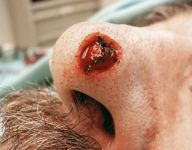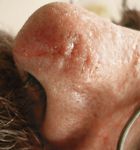- Acne
- Actinic Keratosis
- Aesthetics
- Alopecia
- Atopic Dermatitis
- Buy-and-Bill
- COVID-19
- Case-Based Roundtable
- Chronic Hand Eczema
- Chronic Spontaneous Urticaria
- Drug Watch
- Eczema
- General Dermatology
- Hidradenitis Suppurativa
- Melasma
- NP and PA
- Pediatric Dermatology
- Pigmentary Disorders
- Practice Management
- Precision Medicine and Biologics
- Prurigo Nodularis
- Psoriasis
- Psoriatic Arthritis
- Rare Disease
- Rosacea
- Skin Cancer
- Vitiligo
- Wound Care
Article
From textbook to reality
Victoria, British Columbia - "Question what everyone tells you, including me," advises Daniel Berg, M.D., director of the University of Washington's Center for Dermatologic Surgery.

"Dermatologists are well qualified to do skin surgery," he says. "We've learned the principles that produce good results. On the other hand, it's important to question whether you're doing what you're doing because a teacher told you to or because it really works."
For example, medical students and residents in other specialties are taught not to use epinephrine on the nose, ears or fingers due to worries that the vascular constriction it induces might cause necrosis. However, in dermatology, surgeons use the drug daily to anesthetize the nose and ears for surgery.
Tips for producing optimal scars Yet, Dr. Berg, who has been practicing dematologic surgery for 10 years, does offer reconstruction tips.

Tip number two is basic but, nonetheless, essential to remember. After cutting out skin cancer, be sure to obtain clear margins before closing.
"You need to avoid burying cancer under a beautiful stitch job," he says.

The surgeon emphasizes, "Always choose the simplest option that will yield excellent results. Remember the KISS principle - keep it simple, stupid."

Primary closure may be possible, even in circumstances that seem to call for a flap or graft. Often you can undermine to loosen the tissue and test the efficacy of primary closure.
The face Pay attention to the relaxed skin tension lines - the natural lines created by muscle movement, when placing any incision on the face. To obtain the best possible results, it's also important to respect cosmetic units - areas bounded by natural lines and shadow, such as the nose tip, nostril and dorsum.
Wherever possible, hide scars along the shadow lines or along the borders of cosmetic units. In some cases, you may want to resect portions of the residual cosmetic unit so that the entire unit is replaced by a graft or flap. This ensures that all incision lines are relatively well hidden.
Newsletter
Like what you’re reading? Subscribe to Dermatology Times for weekly updates on therapies, innovations, and real-world practice tips.











